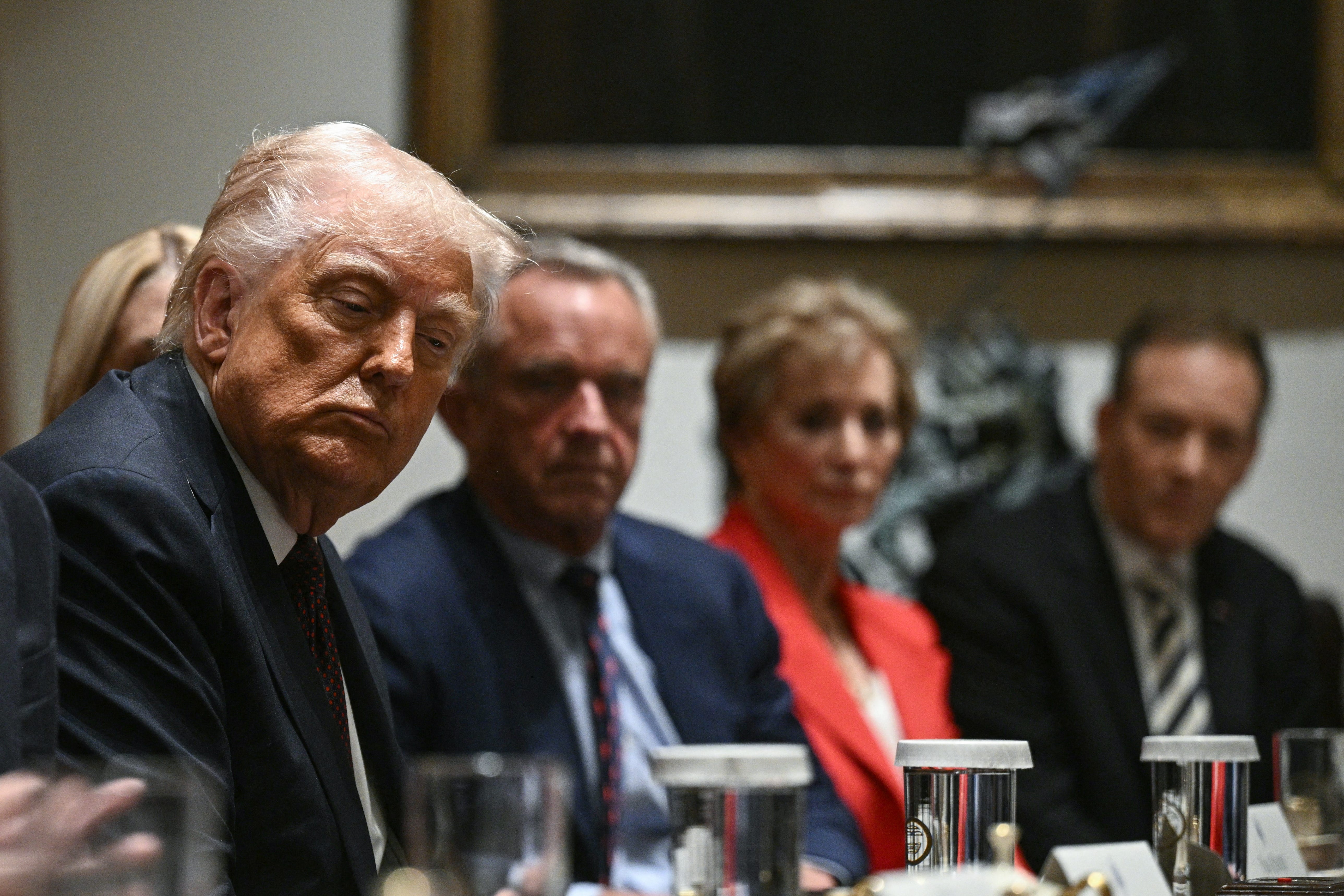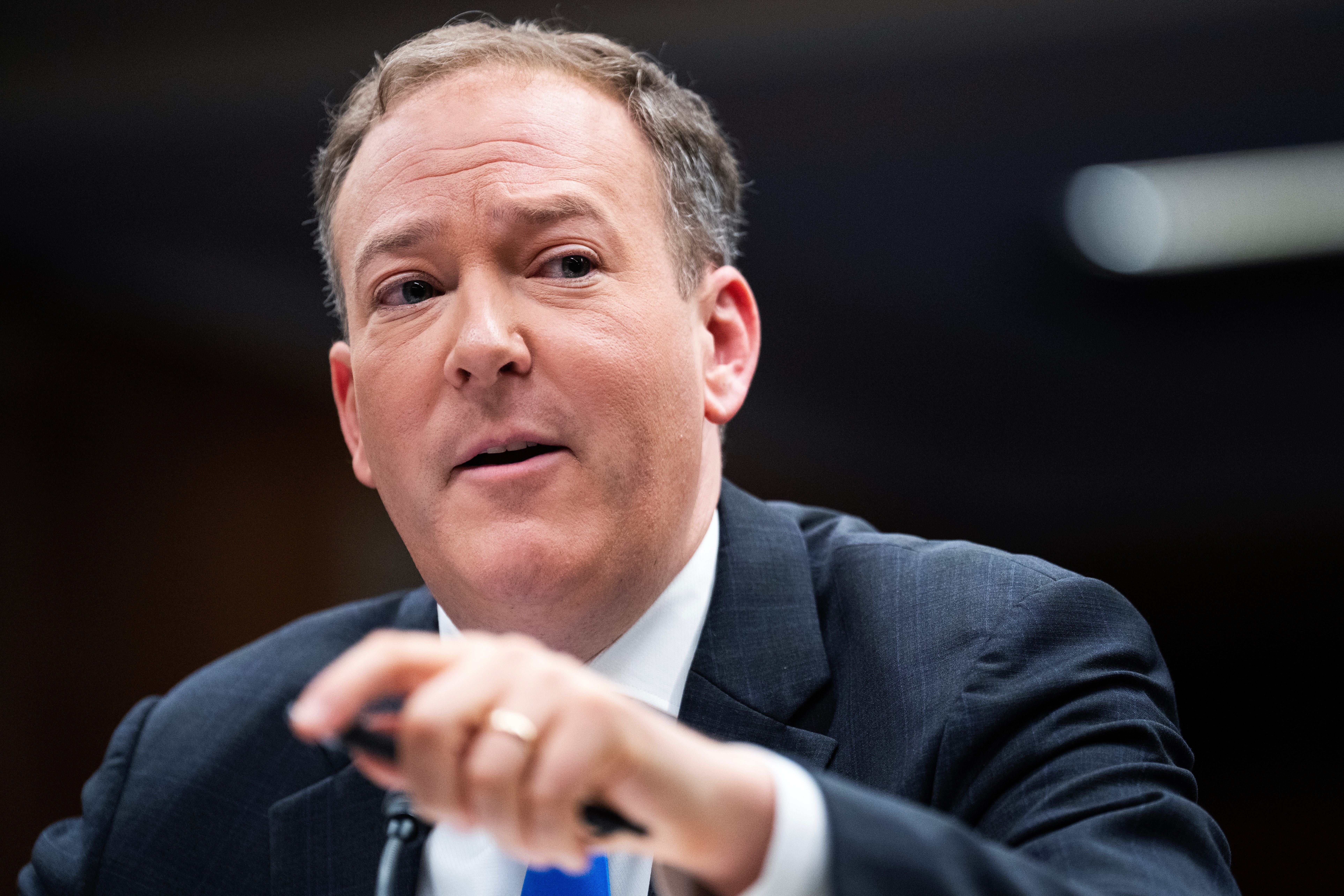
BRENDAN SMIALOWSKI/AFP via Getty Images
President Donald Trump has dismantled federal agencies and slashed spending as he’s pledged to “gut the weaponized deep state.”
He has also vowed to ease the housing shortage across the nation. One promise may come at the expense of the other in the case of one agency’s retrenchment.
In February, his administration sought to take back $20 billion awarded by the Environmental Protection Agency during Joe Biden’s presidency to fund decarbonization projects around the country. The head of the EPA has justified the clawback attempt with unproven accusations that the grants were marred by “programmatic fraud, waste, and abuse.”
As a result, tens of thousands of new apartments and houses that were expected to be financed with a portion of the EPA money are now in danger of not being built, nonprofit groups who were granted the funding say.
Climate United, a coalition that received roughly $7 billion of the money — known as the Greenhouse Gas Reduction Fund — is suing the EPA along with other awardees over the withheld funding. The nonprofit estimates that about 30,000 single-family homes and another 30,000 apartment units were to be built with some of the funds that it and another group were set to administer.
“There’s a significant part of the strategy focused on building not only new housing but new affordable and workforce housing,” Beth Bafford, the CEO of Climate United, said.
There are varied estimates on how many new homes are needed in the US. Freddie Mac, a mortgage lending agency, calculated recently that the country is short about 3.7 million units.
While the tens of thousands of homes that might be built with money from the GGRF would be just a small contribution toward that huge need, the fund’s proponents say the money would go to a particularly impactful segment of the market.
Bafford said that the focus of the GGRF money was on housing development projects in a part of the market with a lack of private sector financing options: affordable projects using energy-efficient systems and materials that are environmentally sustainable while helping mitigate utility costs for residents.
“We see massive gaps in the financial markets, and this program was built to address some of those gaps,” Bafford said.
A spokesperson for Climate United said it had “disbursed $25 million in loans and committed over $500 million in loans before the EPA terminated our grant agreement without warning.”
“Unlike the Biden-Haris administration, this EPA is committed to being an exceptional steward of taxpayer dollars,” an unnamed spokesperson from the EPA responded in an email.
The spokesperson said the GGRF’s termination was “based on substantial concerns” over its “integrity, the award process, and programmatic waste and abuse, which collectively undermine the fundamental goals and statutory objectives of the award.”
Some developers are already feeling the impact
The impacts of the freeze have already been felt by some developers.
Megan Lasch, the chief executive of O-SDA Industries, a for-profit builder of affordable housing based in Austin, said the EPA’s clawback attempt made her reshuffle a portion of the financing package she had been arranging for a 90-unit affordable apartment project her firm is developing in Fort Worth, Texas.
The roughly $37 million development involves renovating 801 West Shaw St., a historic building with 45 rental apartments, erecting an additional 45 units on land adjacent to the property, and building a pre-K facility.
Lasch said she had arranged to use some $3 million of GGRF money for the project from the Local Initiatives Support Corporation, a member of Power Forward Communities, a coalition that received $2 billion of the EPA money.
When the GGRF money was held up, Lasch said that she found a replacement loan but that the new funding is more costly, carrying a roughly 4.5% interest rate versus the GGRF loan’s roughly 1% rate.
“The patch was not pretty,” Lasch said, adding that affordable housing projects often have thin margins and require deeply discounted financing to work. “There’s going to be ultimately a lot of projects that will just go by the wayside because they’re not able to come up with a patch.”
The 801 West Shaw St. building is set to offer rents that are affordable for residents who earn between 30% and 60% of the area’s median income, Lasch said.
Damon Burns, the CEO of Finance New Orleans, a public trust that helps fund and develop affordable housing in its namesake city, said that his organization had been allocated $5 million from the Coalition for Green Capital, which received $5 billion of GGRF money from the EPA.
Finance New Orleans was seeking to use about $1 million of that $5 million it was to receive in combination with $1.5 million of other funds it holds to build six or seven new homes with net-zero emissions.
Using GGRF money to augment his organization’s funding pipeline to build more housing was a model that Burns said he had hoped to scale.
He said the prospect of having the GGRF money withdrawn was daunting because New Orleans is “already a financially constrained city.”
“There is a huge concern that the disinvestment of the federal government will have an impact on all of our communities,” Burns said. “It means less mortgages for homeowners. It means less capital for developers.”
A climate-focused financing initiative
The GGRF was created with $27 billion of federal funds from the Biden administration’s Inflation Reduction Act, which Congress passed in 2022. Some $20 billion of that amount was awarded to Climate United, Power Forward Communities, the Coalition for Green Capital, and other groups for various climate-focused financing initiatives. The remaining $7 billion went toward a federal program to fund residential solar energy installation projects.
In December, Project Veritas, a conservative media organization, published a video that showed a former EPA official suggesting that the agency, under Biden, had fast-tracked its award of the money in anticipation that the incoming Trump administration might seek to scuttle the program.

Tom Williams/CQ-Roll Call, Inc via Getty Images
In the video, the official said: “It truly feels like we’re on the Titanic and we’re throwing gold bars off the edge.”
Lee Zeldin, a former Long Island, New York, congressman whom Trump appointed as the head of the EPA in January, cited the video as evidence of misconduct in the allocation of the funds.
“One of my very top priorities at EPA is to be an excellent steward of your hard-earned tax dollars,” Zeldin said in a video posted on his X account in February. “The ‘gold bars’ were your tax dollars, and tossing them off the Titanic meant the Biden administration knew they were wasting it.”
Zeldin has ordered the termination of the GGRF.
In March, Climate United sued the EPA and Citibank, the financial intermediary for the $20 billion, in the federal district court in Washington, DC, over their refusal to release the money. Power Forward and the Coalition for Green Capital have joined the suit.
The EPA lost the initial argument for the case but has brought its complaint to the Court of Appeals for the District of Columbia Circuit, where it won a preliminary order in April to freeze the money as its appeal is being considered. The next hearing in the case is scheduled for Monday.
‘Every single project in the country is looking for gap funding’
While Climate United estimated that terminating the GGRF would put roughly 60,000 homes at risk, other parties involved in the financing program say that number could be even greater.
There has been a sharp increase in the number of housing developers interested in tapping financing from the GGRF, said Shaun Donovan, the president and CEO of the nonprofit housing lender Enterprise Community Partners. He was a secretary of the Department of Housing and Urban Development in the Obama administration.
Donovan attributed that interest to growing construction costs from inflation and tariffs, which have driven up the price of building materials. Those overruns have punched holes in the budgets of a host of development projects that builders have scrambled to fill.
“Every single project in the country is looking for gap funding,” Donovan said. “What this GGRF money can do is to be that last dollar in, right? So even if it’s only 5% or 10% of the project.”
A spokesperson for Enterprise said that it had received inquiries for about $1.2 billion of financing in recent months for a collection of projects totaling 18,426 units.
“My concern is that what this and other efforts to cut housing programs will do is make it impossible for the president to meet his goal of reducing housing costs,” Donovan said.
The post How Trump’s EPA wrecking ball could also damage new housing appeared first on Business Insider.




